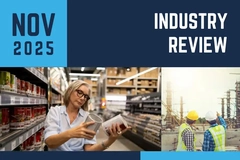
- Industry news
Industry news
- Category news
- Reports
- Key trends
- Multimedia
Multimedia
- Journal
- Events
- Suppliers
Suppliers
- Home
- Industry news
Industry news
- Category news
- Reports
- Key trends
- Multimedia
Multimedia
- Events
- Suppliers
Suppliers
Microplastic pollution: US researchers map global human ingestion rates

27 May 2024 --- US researchers have mapped microplastic ingestion in humans across 109 countries, highlighting the scale of pollution growth and its correlation with rapidly industrializing countries in East Asia, like Indonesia, Malaysia, the Philippines and Vietnam, where F&B contamination via ocean pollution and food processing is highest.
The study, conducted by researchers at Cornell University, US, is published in Environmental Science & Technology.
The authors say the results provide the first microplastic human uptake map that helps indicate local and global mitigation efforts needed to curb the persistent rise of microplastic pollution associated with SDGs.
The finding that rapidly industrializing countries top global microplastic uptake largely originates from high seafood consumption. “These regions demand minimizing microplastic contents in raw foodstuffs, exposure through packaging materials and release during food processing,” say the researchers.
Replacing single-use
African countries such as Egypt were also identified as hotspots of microplastic uptake mainly from particulates in foodstuffs, which the researchers say demand government incentives to remedy.
 Per capita daily MP dietary and inhalation uptake rates at the country level in 109 industrialized and developing countries.“In these regions, practices include substituting plastic use coupled with effective solid waste recycling to enable the absorption of domestic discarded plastics and sufficiently restrict MP release to natural environments,” reads the study.
Per capita daily MP dietary and inhalation uptake rates at the country level in 109 industrialized and developing countries.“In these regions, practices include substituting plastic use coupled with effective solid waste recycling to enable the absorption of domestic discarded plastics and sufficiently restrict MP release to natural environments,” reads the study.
“Taking these measures in these regions also requires international collaborative efforts, such as technology support from developed regions, to adopt these technologies effectively.”
The study recommends replacing single-use polyolefin plastics with highly degradable alternatives, such as edible bio-based materials — which would help minimize the release of microplastics from packaging materials, they say, especially in beverages.
Moreover, the researchers say that localized industrial and political action should coordinate with, instead of going beyond, global efforts to advance microplastic mitigation measures.
“In the long run, harmonizing these local technology advances with international waste trade, associated with SDG 17 (Partnerships for the Goals), could help effectively redistribute surplus wastes from these regions with inadequate waste management to those better equipped,” they say.
“All these multifaceted approaches accentuate the technology and policy measures to curtail microplastic uptake risks.”
Future research
The researchers express their willingness to expand and improve the map with important information not yet accounted for. “We did not explicitly investigate the effects of people’s age, future dietary habits and shapes and sizes of microplastic contents on microplastic human uptake, all of which combined are the major limitations of this study,” the researchers say.
“Given the limited existing investigation in microplastic human uptake, we proposed several potential improvement directions for this microplastic map to provide better estimates and indicate each country’s role and contribution to pollution mitigation.”
The results also did not explicitly investigate the effect of particle characteristics of microplastic contents, including chemical compositions and shape and size distributions, on human uptake.
The team says coupling the particle characterization of microplastic contents with food quality sampling to monitor their uptake from diet can help monitor and extract a spectrum of particle characteristics of microplastic contents and avoid the arbitrary data extraction from limited existing dietary microplastic investigations.
“Our study provides preliminary investigation on these correlations and enables the indication of the effects of collaborative efforts when factoring in local government incentives and international collaborations provided to advance local waste end-of-life practices.”
“By reviewing and comparing each of these microplastic uptake reduction efforts across countries by specific technologies and regions involved in collaborations, the enhanced microplastic uptake map will spotlight regions most and least in need of plastic pollution mitigation and indicate their necessary contributions to reach global treaties.”
By Louis Gore-Langton











